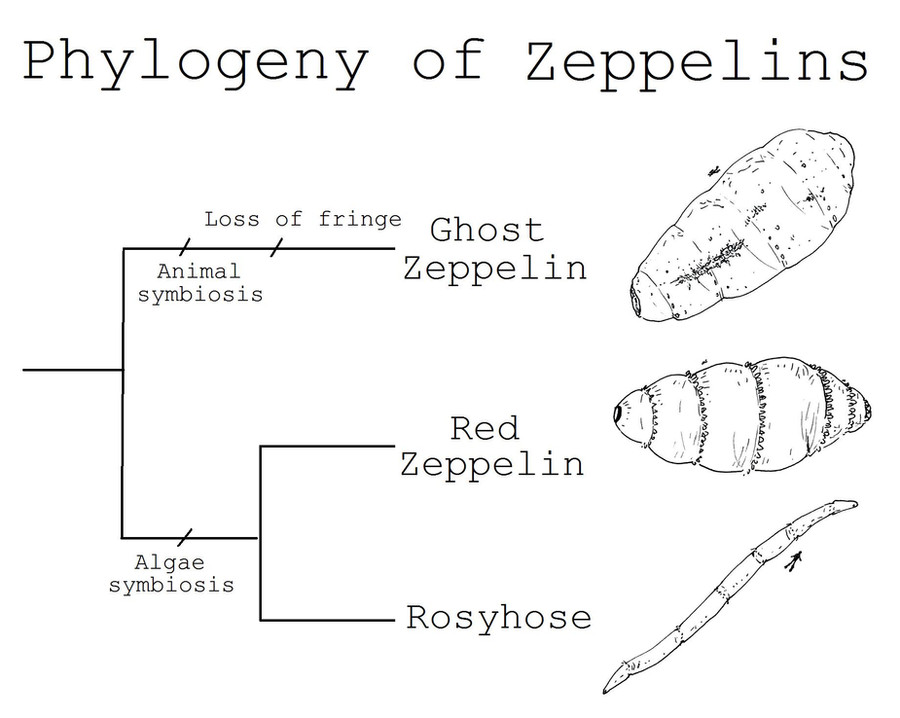HOME | DD
 Malicious-Monkey — Phylogeny of Zeppelins
Malicious-Monkey — Phylogeny of Zeppelins

#alien #exobiology #sciencefiction #scifi #seacreature #species #whale #zeppelin #ilion #phylogeny #xenobiology #cladogram #speculativeevolution
Published: 2014-09-24 03:09:07 +0000 UTC; Views: 2282; Favourites: 27; Downloads: 0
Redirect to original
Description
Zeppelins are the largest animals on Ilion, though most of their body is empty space. Zeppelins are made up several individuals linked together. There are only three species.
Ghost zeppelin – These predators are built for swallowing and not much else. Killing, chewing, and digestion (not necessarily in that order) are handled by a variety of symbionts that live inside the main chamber. These include pinhole fish, annulids, lancers, plankton, and microbes. Some of these are obligate mutualists that exist only inside zeppelins. Ghost zeppelins mix their gut fauna while mating and innoculate their larval offspring with eggs, spores, and microbes before release into the open water. Facultative mutualists and commensals are acquired later in the diet.
Red zeppelin – The red zeppelin is part filter feeder, part photosynthesizer. Red algae reside on the inner body wall as a biofilm, providing the host with energy in exchange for a substrate to grow on. Stinging cells ward off most predators except for those specialized to hunt zeppelins, such as the gulf whallabeast.
Rosyhose – The rosyhose is small and elongate relative to its sister, but it lives a similar lifestyle in shallow waters. Its sting can stun most predators but it falls easy prey to razor reefs.
Zoom out: Volcanoids
Related content
Comments: 3

Cool concept. These guys seem very interesting and, judging by the sizes of the divers next to them, huge.
👍: 0 ⏩: 0

I like these guys quite a bit! I'm a bit curious, however, on their locomotion. Do they move by pumping water through their gargantuan bodies?
👍: 0 ⏩: 1

They move very little. When they do need to get somewhere quickly they can evacuate their body cavities but then they lose a lot of their microflora. A filter keeps the macrofauna inside. It's only for emergencies. Otherwise they just undulate or float with the current. The rosyhose is a bit more mobile, it can snake around a bit but it's still slow.
👍: 0 ⏩: 0

























